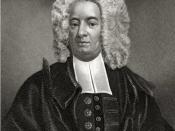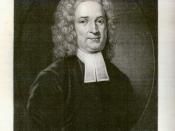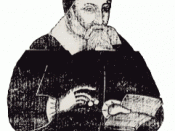Increase Mather, one of Puritan New England's foremost ministers and scholars, died in 1l723 at his home in Boston. As he lay "feeble and sore broken" upon his death bed, he faced his life's end with desperate "fear and trembling." He was tormented by the thought that he might be bound for Hell. John Tappin died in Boston in 1673 at the age of 18. He, too, suffered bitter spiritual torment in the face of deeath. Although he had been a godly youth, he bemoaned "his hardness of heart and blindness of minde" and feared that he was destined for eternal damnation.
For seventeenth century New Englanders, death was a grim and terrifying reality. Of the first 102 Pilgrims who landed at Plymouth in 1620, half died during the first winter. Death rates soon fell sharply, until they were about a third below those in England, France, or the colonial Chesapeake, but death still remained an omnipresent part of life.
The tolling of church bells on the day of funerals was so common that it was legislated against as a public nuisance. It was customary in colonial New England to send a pair of gloves to friends and relatives to invite them to funerals. Andrew Eliot, minister of Boston's North Church, saved the gloves that people sent to him. In 32 years he collected 3,000 pairs.
Death reached into all corners of life, striking people of all ages, not just the old. In the healthiest regions, one child in ten died during the first year of life. In less healthy areas, like Boston, the figure was three in ten. Cotton Mather, the famous Boston minister, had 14 children. Seven died in infancy and just one lived to the age of thirty. Bacterial stomach infections, intestinal worms, epidemic diseases,


